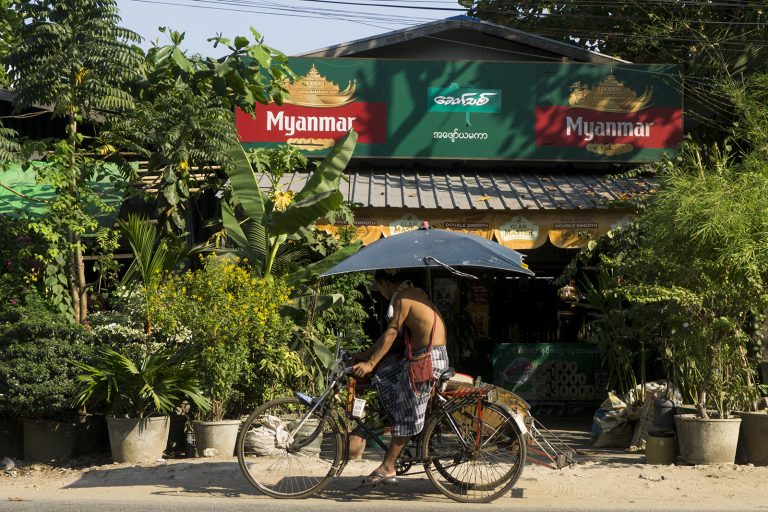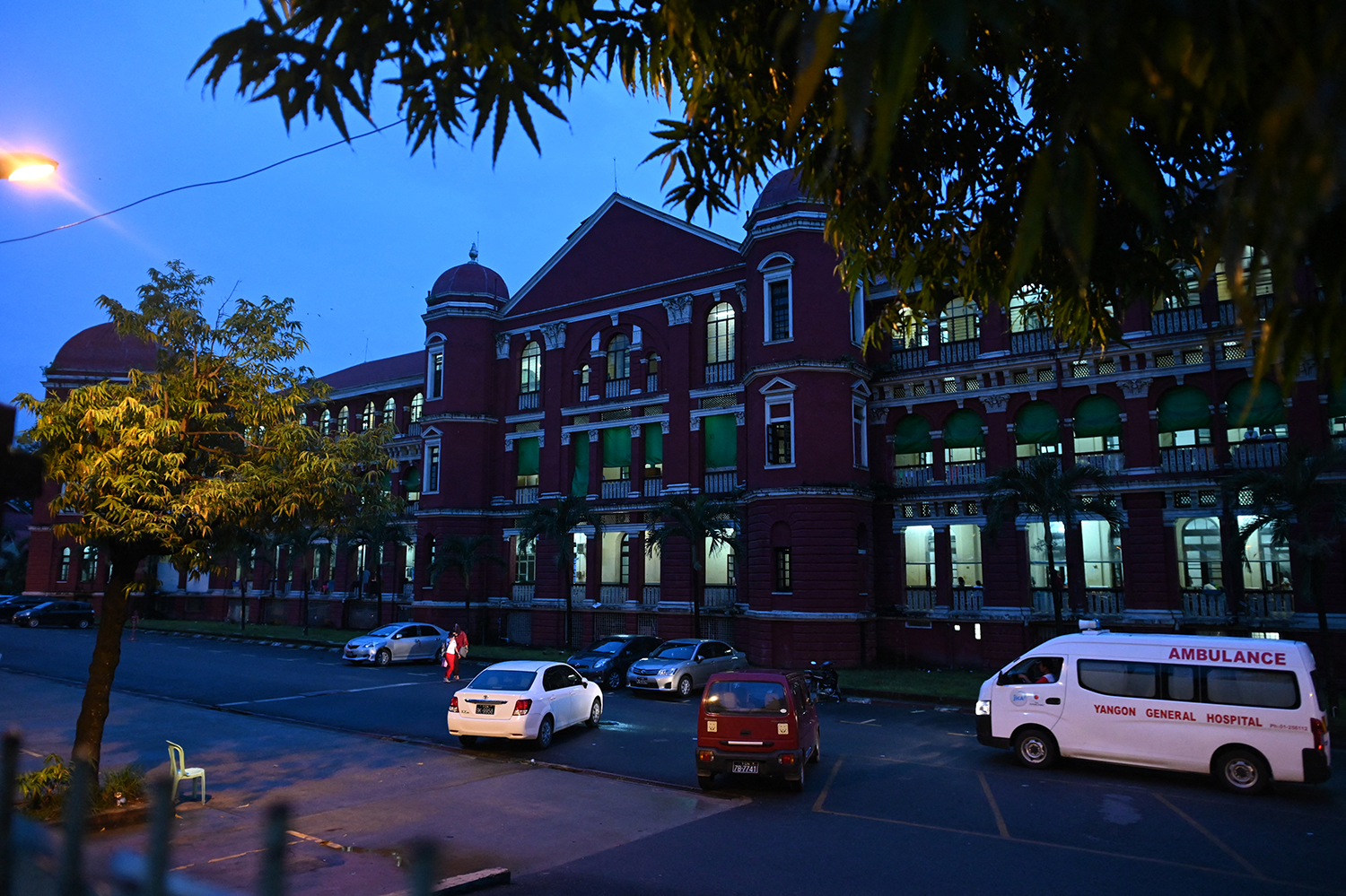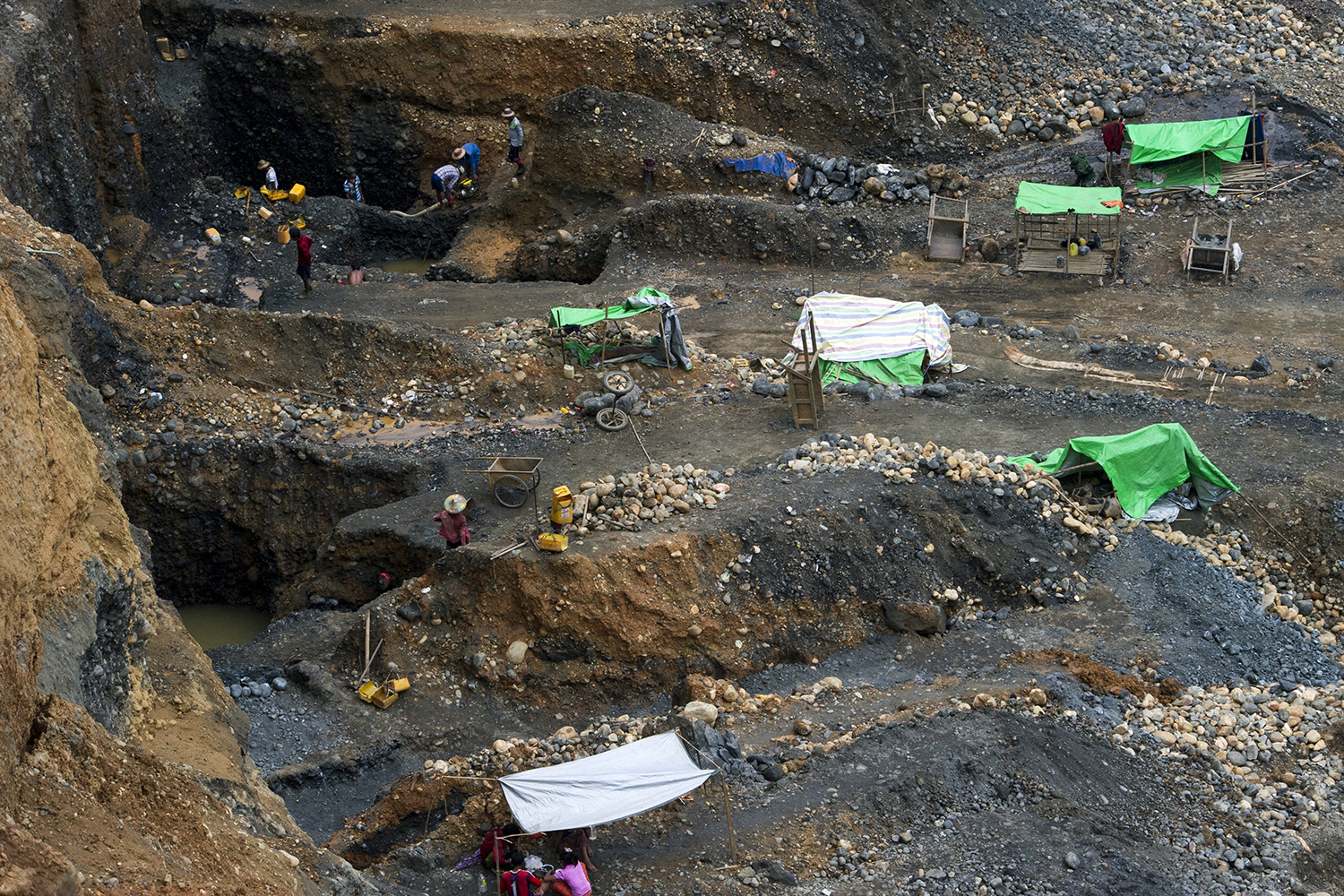Although Myanmar’s recent economic and political transformation has garnered much more attention, bubbling under the surface have been changes to the country’s administrative processes.
By OLIVER SLOW | FRONTIER

Yangon’s City Hall. (Ann Wang / Frontier)
In a surprisingly frank speech to senior government officials in December 2012, President U Thein Sein acknowledged the corruption, inefficiency and poor service at all levels of government.
“We have found that departments at various levels of government do not listen to people’s voices, and there is no transparency in what they are doing,” he said.
Myanmar is famously bureaucratic, with the simplest of procedures often needing the consideration of many public servants before being approved or rejected, and there remains a distrust of a bureaucracy that was dominated by the military for decades.
Support more independent journalism like this. Sign up to be a Frontier member.
After gaining independence, Myanmar was able to transform relatively successfully from a colonial government that was “highly centralized, obsessed with maintaining order and spent little on public services,” said a June 2015 report by the Asia Foundation.
The report, ‘Conceptualizing Public Sector in Reform in Myanmar’, said the period from 1948 to 1962 was a ‘Golden Era’ for public administration in Myanmar, with strong legal and administrative frameworks. However, this changed when Ne Win’s Revolutionary Council seized power in 1962, blurring the lines between the civil service and politics, and tightening the military’s grip on power.
This ‘control’ mindset intensified after the suppression of the national uprising in 1988, when the military became increasingly suspicious of potential dissenters within government ranks, taking over at almost all levels of the bureaucracy.
“In most OECD countries, you would have a bureaucratic level and a political level, with clearly defined roles for each. In Myanmar, there are not clear boundaries,” said U Tin Maung Than, a co-author of the Asia Foundation report and director of Myanmar Development Research Institute – Centre for Economic and Social Development.
A highly centralized system
The public sector in Myanmar refers to employees of the Union government, the state and region governments, the Union territories and state economic enterprises.
The governance system is highly centralised, with most decisions still being made in Nay Pyi Taw, despite President U Thein Sein’s attempts to devolve some decision-making powers to state and region governments and township authorities.
Home Affairs is the most powerful ministry, reporting directly to the Tatmadaw Commander-in-Chief. An important component of the ministry is its General Administration Department – an evolution of the office that formed the backbone of the bureaucracy during British colonial rule – which has offices in all states and regions, districts, townships, wards and villages, and appoints all administrators in the country’s 330 townships.
“Up until 2011, civil servants were rarely able to make their own decisions,” said U Tin Maung Than. “In our research, we found that directors general would often see their role as office clerks,” he said. “They would drive the car, but the direction was given by the minister, who was sitting in the back of the car. If the minister said ‘left’, they turned left.”
U Tin Maung Than said a significant change since 2011 has been the establishment in each ministry of executive committees that function as a middle ground for discussion about key decisions that were previously made by a minister.
“I have no doubt that the government wants to change the current administrative structure, everyone in Burma wants to do that, but there is often a lack of knowledge in how to do that.”
“So it is better than one person making the decision, but there is still a gap. The service delivery depends on how you prioritise and analyse,” he said.
One of the early success stories in public sector reform has involved the Ministry of Communications and Information Technology, which for years held a monopoly in the telecommunications sector through Myanmar Posts and Telecommunications.
The government tendering process, largely regarded as clean and transparent, that resulted in Oordeoo and Telenor entering the telecoms market in 2013, as well as the overhaul of MPT through its partnership with Japan’s KDDI, are regarded as good examples of state economic enterprise reform.
“There was a proper tender process that stopped the monopoly by the ministry and made phone calls more affordable, but those practices have not yet been extended to other ministries,” said U Tin Maung Than.
Budget allocations
Myanmar has for decades prioritised spending on defence over allocations for education or health, which remain among the lowest in Southeast Asia.
A shift in spending priorities would help to create more trust in the reform process, say analysts.
“Over the past few years, there have been large increases in health and education expenditure, both in absolute terms and relative to the budget as a whole. The military budget has also increased in absolute terms, but decreased in relative terms,” said Bart Robertson, a development economist.
He added that much of the increased spending has been in salaries, which remain comparatively low despite recent wage rises, and that these increases do not necessarily result in an improvement in the quality of services.
There have also been changes in budget management. Budget allocations were previously discussed by a select few, with final decisions made by the President’s Office. Under the reforms, the legislative branch of government at the Union and state and region levels are involved in the process.
However, the state and region chief ministers, who are appointed by the President, still wield considerable power in deciding how budgets are spent, said Mr Robertson.
A transparent budgeting process would help to create trust and greater public access to financial information was needed for this to happen, he said.
“Engaging the public in PFM [public financial management) is just as much of a supply side issue as a demand issue,” said Mr Robertson. “Not only must the government provide information in a transparent manner and be willing to engage, but there must be a genuine demand from civil society and the population at large,” he said.
Mr Robertson said there was so far little evidence of the general public showing interest in the budget process, though some civil society groups have advocated for greater transparency.
U Tin Maung Than said a major challenge for public sector reform would be to bring together different schools of thought.
The military is trained to carry out missions, “but bureaucrats are trained to look at where the problems start, establish if it is a real problem and then come up with a choice of solutions,” U Tin Maung Than said.
“I have no doubt that the government wants to change the current administrative structure, everyone in Burma wants to do that, but there is often a lack of knowledge in how to do that,” he said, adding that public sector reform could take between 10 and 15 years.
“I think the key for the reform to be legitimate is that the three stakeholders – politicians, bureaucrats and the people – are included. You need to create an environment where the bureaucrats can talk freely about any issues they have, and [encourage] the participation of all people to create a true civil society.”






